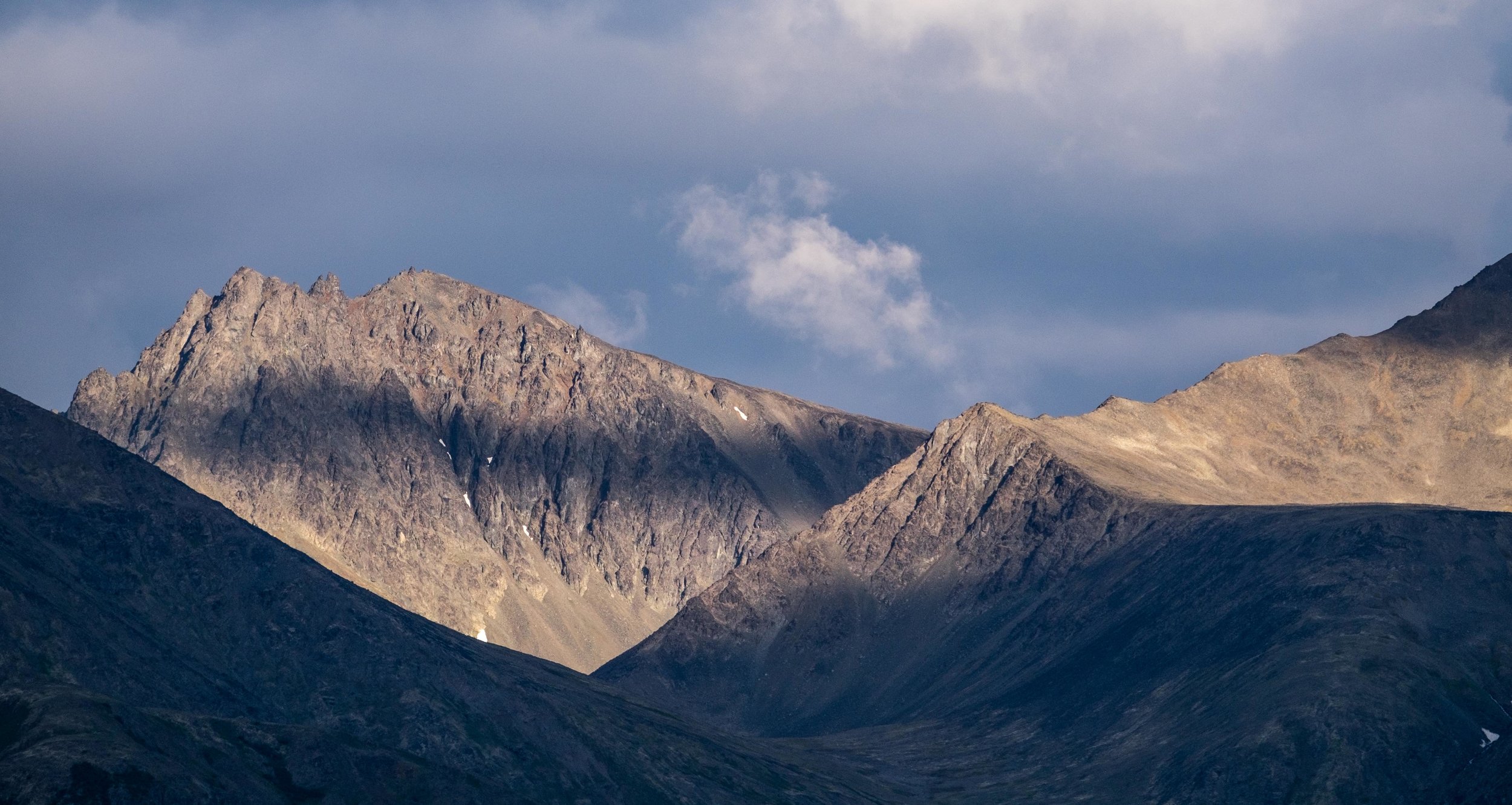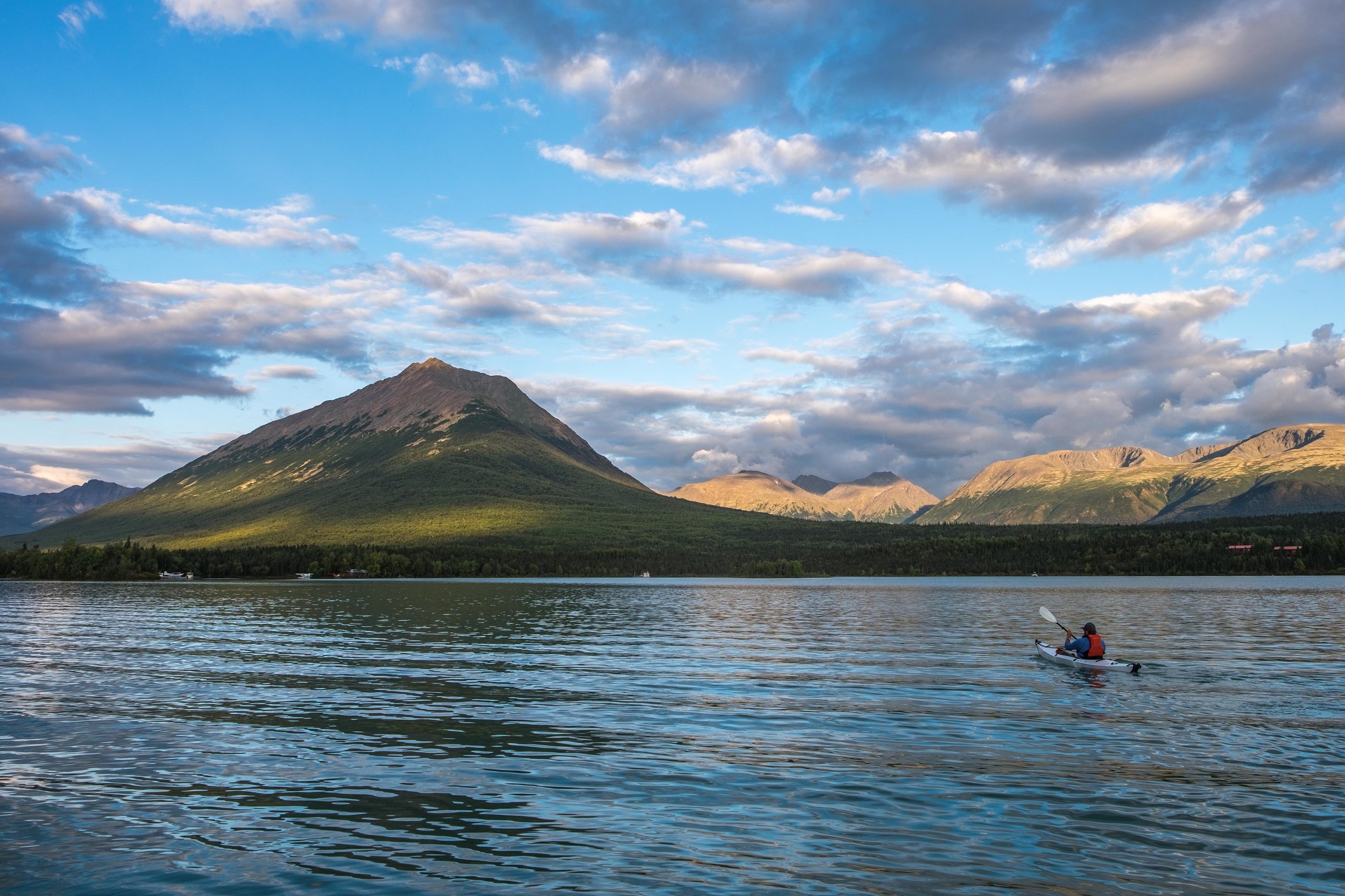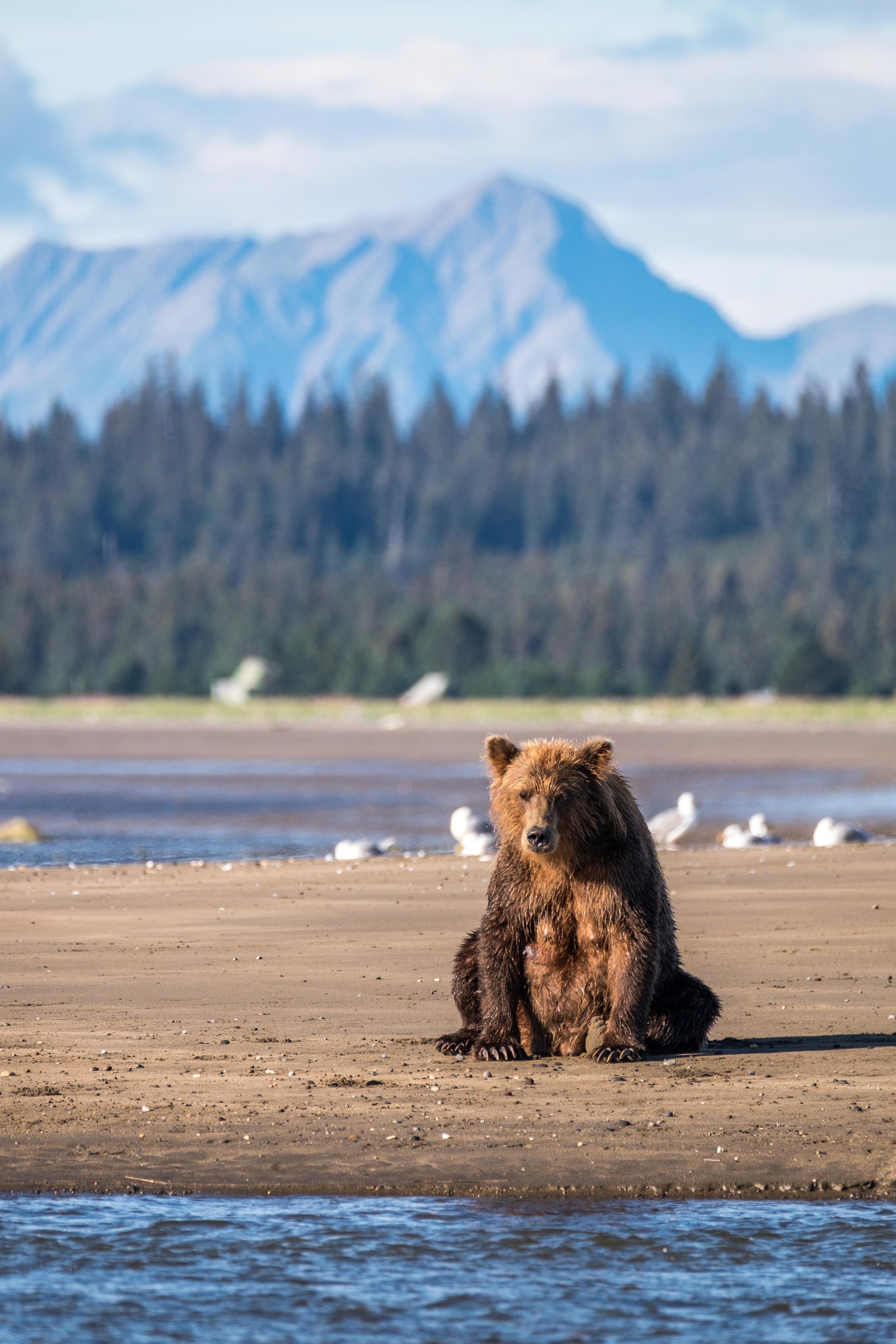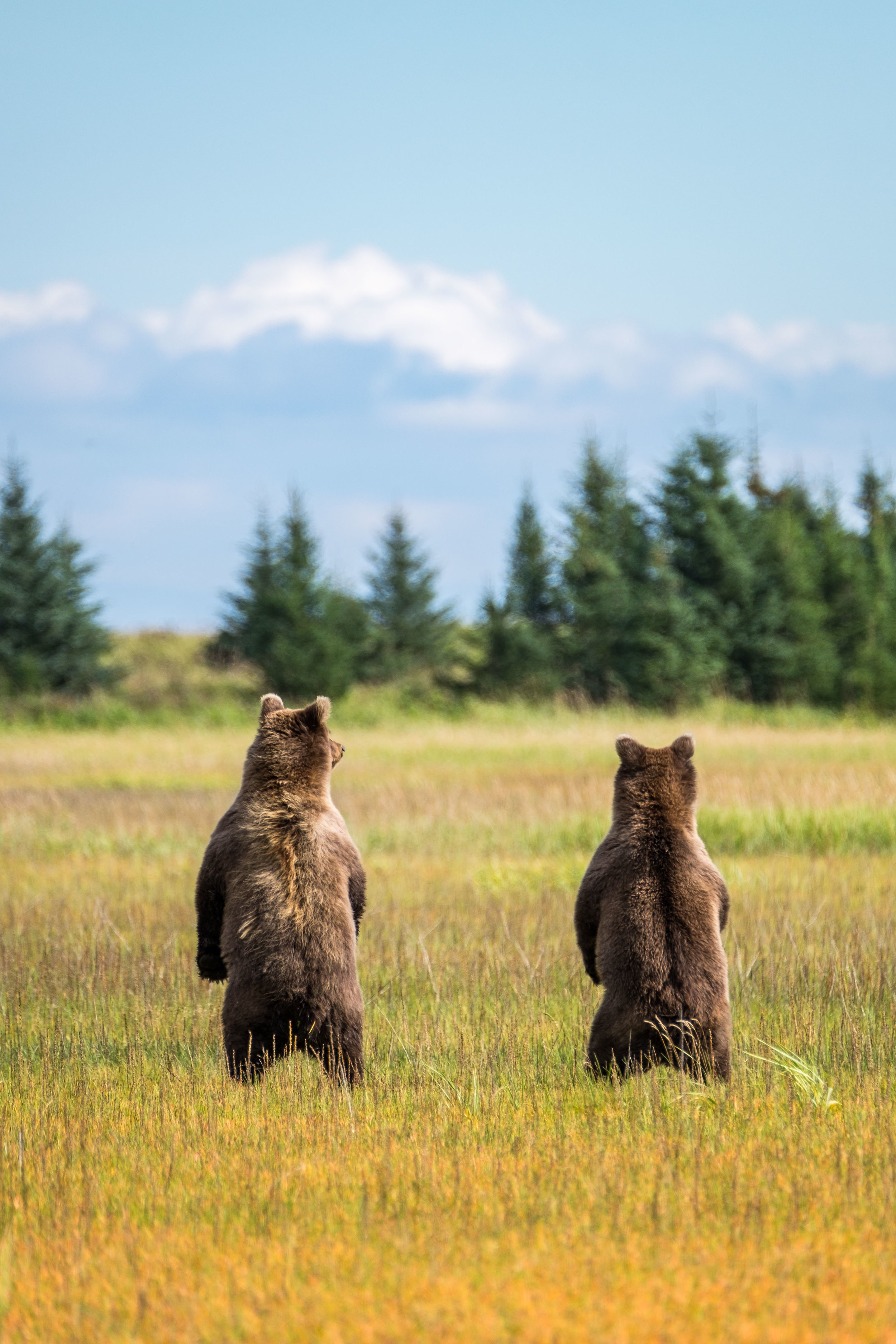Lake Clark National Park and Preserve, Alaska, USA | Park 37/59
“Think of all the splendors that bespeak Alaska. Glaciers, volcanoes, alpine spires, wild rivers, lakes with grayling on the rise. Picture coasts feathered with countless seabirds. Imagine dense forests and far-sweeping tundra, herds of caribou, great roving bears. Now concentrate all these and more into less than one percent of the state—and behold the Lake Clark region, Alaska’s epitome.”
3 Ways to Explore Lake Clark National Park in Alaska
Lake Clark is one of the National Park System’s true gems—a large sliver of all of the best parts of Alaska rolled into one easy-to-get-to place. It is almost as if Mother Nature created it with explorers in mind, offering diverse environments for mountaineers, backpackers, paddlers, big-game fisherman, hikers, and photographers to play in. The lake that bares the park's namesake is Lake Clark—a 40-mile, vividly turquoise-colored body of water that is fed by glaciers, waterfalls, rivers, and streams; and that is surrounded by volcanoes, mountains, tundra, freshwater lakes, forest, meadows, marshes, bogs, and sandy coastline... as I said, it is the best of wild Alaska rolled into one fine park.
Like most of Alaska’s national parks, it is one of the least visited of all 59—many have never even heard of it—a major draw for Alaska's adventure circuit and residents alike who go there for its remoteness and untrammeled beauty. Entrance to the park and travel within it is possible only by plane, boat, or on foot. Flights are made easier with daily routes from Anchorage located just 100 miles away, but because this area is so rugged many don’t even know where to start planning an adventure to Lake Clark. To help with that, we are breaking down ways to discover it that together fulfill a cultural, wilderness, and wildlife experience—on the lake, in the mountains, and by the sea.
Exploring Port Alsworth and Lake Clark
About 40 minutes by float- or bush-plane from Anchorage resides the small lakeside community of Port Alsworth on the southwestern edge of the park. In Port Alsworth, a little bit of everything can be found. There are several lodges, the most popular being the Farm Lodge that is owned and operated by the Alsworth family who are 2nd, 3rd, and 4th generation ascendants of the community’s founder: Babe Alsworth, a missionary and bush pilot who laid down roots in 1950. If you are looking for wholesome lakeside family fun, this is your jam. Nearby are 10 waterfront lodges overlooking a protected bay where kayaks float, motorboats scoot off for fishing adventures, and seaplanes come and go ferrying passengers in and out of relaxed stays and backcountry adventures.
The first stop for most in Port Alsworth is at the Lake Clark National Park Visitor Center where backcountry permits and information is issued to incoming travelers. Nearby are several awesome day hikes—two of the most popular being the short and easy hike to Tanalian Falls; and a more difficult trek to the top of the Tanalian Mountain that towers over the bay where you can take in amazing panoramic views of Lake Clark and the surrounding mountains.
The Port Alsworth setting is immeasurably peaceful, but as it is the main thoroughfare to the national park, it is not without its fair share of people. Greater solitude can be found in the backcountry Lake Clark wilderness, and Port Alsworth is the perfect jumping off point to get you there—it is from where we departed on our quest to reach Turquoise Lake where we backpacked and kayaked for two days in total solitude. Read on!
Backcountry camping at Turquoise Lake
The National Park Service states that Lake Clark was established to protect a region of dynamic geologic and ecological processes that create scenic mountain landscapes, unaltered watersheds… and habitats for wilderness dependent populations of fish and wildlife, vital to 10,000 years of human history. This effort in all of its wildness was perfectly evident at Turquoise Lake, just a hop and a skip from park headquarters in Port Alsworth. Located between Telaquana Lake and Twin Lakes in the heart of Lake Clark, visitors can have a relatively easy and awesome foray into backcountry camping in Alaska. After being dropped off by float plane, we set up our tent, bear-proofed our food, folded our new Oru origami kayaks, and paddled off to a braided river formed at the base of 8,000-foot high glacial mountain on the other side of the lake, stopping along the way to explore the tundra landscape on foot. With only ourselves and the Lake Clark wilderness to contend with, we were free to explore the pristine lake at our own pace free of distraction and anything that wasn't our own making. It was awesome!
Bear viewing adventure on the coast: Silver Salmon Creek Lodge
With such a diverse landscape that exists in Lake Clark, it is unsurprising that the area is rich with wildlife…and one of the best places to put yourself smack in the middle of it is at the Silver Salmon Creek Lodge on the western shores of the Cook Inlet in south-central Alaska. Many regard Katmai as the ultimate bear-viewing destination in the 49th state; after our time at Silver Salmon, we can put Lake Clark into that same category without one bit of hesitation.
The experience would better be described as “bear interaction,” than it would "bear viewing" as we were walking aside coastal brown bears the entirety of our stay. Joined by naturalists who have studied the bears that inhabit the area season after season, we were granted an unusual glimpse into the behavioral nuances and growth patters of sows, cubs, and full-grown males that call the Cook Inlet home. Between what we learned from naturalist expertise and the wonder of bear behavior occurring all around us 24/7, our jaws were on the ground the entire time.
Since 1983, hosts David and Joanne Coray have led American and international guests onto the shorelines of Lake Clark, sharing their wild home with each of us in a tailored way. The lodge is equipped to welcome even the most hard-core wildlife photographers, backcountry hikers, and world-class sport fisherman... or, anyone who simply wants to get close to Alaskan brown bears in their natural habitat.
We have to give our warmest thanks to the incredible naturalists, guides, chefs, other staff, and of course, to David and Joanne for running such an impeccable show and sharing it with us during our time in Lake Clark at the end of our Alaskan voyage. This experience will forever stand out as one of the ultimate wildlife adventures either of us have ever had. Thank you!
Quotable Images
“Lake Clark was established to protect a region of dynamic geologic and ecological processes that create scenic mountain landscapes, unaltered watersheds supporting Bristol Bay red salmon, and habitats for wilderness dependent populations of fish and wildlife, vital to 10,000 years of human history. ”
Fact Box
4 million acres | Premier bear viewing habitat | Among Alaska’s most diverse ecosystems
Official name: Lake Clarke National Park and Preserve
Date established: December 2, 1980
Location: South central Alaska, on the Alaska Peninsula
How to get there: Hop in a float plane and fly for an hour or so from Alaska's capital city of Anchorage. Most scheduled routes fly into the interior lake region of the park but air taxis can make stops at prearranged places throughout the park, weather dependent.
How the park got its name: According to the National Park Service, the original name of Lake Clark was Qizhjeh Vena, meaning ‘a place where people gathered’ in Dena’ina Athabascan, the language of natives who have lived in the region for thousands of years.
Iconic site in the park: On Upper Twin Lake you will find Richard Proenekke’s Cabin, a historic homestead built in 1968 by an engineer at heart who lived on and off in the area for more than 30 years. During that time he meticulously designed a cabin and all of the tools one would need to survive in such an extreme environment with innovative craftsmanship that would become his hallmark. He has been regarded as an icon of “true wilderness values” in Alaska. You can only get there by float plane, and during the summer months you can stay at established campgrounds on the lake and explore the area that inspired his life and work.
Paddling next to the Farm Lodge in Port Alsworth, Lake Clark.
Accessible adventure: If you have only a short amount of time and want to get a taste of the Lake Clark wilderness, take a short trip to Port Alsworth—the jumping off point into all great places in the park and a wonderful place in its own right. Even if your travels won’t take you farther than this Alaska frontier town, have no fear! There are many riches to enjoy in Port Alsworth that will fulfill both cultural and wilderness exploration. In one central area you can visit the National Park Visitor Center, explore Tenalian Falls, and rent a canoe and paddle out into the pristine Hardenberg Bay located on the east side of Lake Clark.
Big adventure: In less than one hour you can fly from Port Alsworth to a series of fresh water lakes including Twin Lakes and Turquoise Lake, where you can pitch a tent and spend your time in the wilds of backcountry without the impact of other travelers. In Twin Lakes, you can get your cultural fill by taking a tour at Proenekke’s Cabin and camping nearby; or, you can forge your own adventure by touching down by float plane in Turquoise Lake, where a glacier feeds into the perfect lake—which is incidentally, a perfect place to paddle.
Did you know…
There are no roads in Lake Clark National Park—meaning time to go bushwhacking and fly through the skies!
While Lake Clark is considered a “trail-less wilderness,” there are actually seven miles of established hiking trails.
Flying over glacier and through mountains on the way to Lake Clark. Just another gorgeous day in Alaska!
The elevation in Lake Clark starts at sea level and rises to 10,000 feet. The highest point in the park is in the mountainous spine of the Chigmit Mountains—the volcanic Mount Redoubt, standing at 10,197 feet.
There are two active volcanoes in the park that sit on the Pacific Ring of Fire: Mount Iliamna and Mount Redoubt. Redoubt has had four eruption events on record, in 1902, 1966, 1989, and 2009. Today, they still vent and spew steam and gas into the sky.
Four of the largest glaciers on the Illiamna Volcano in Lake Clark contain 3.6 cubic miles of ice—triple the amount of ice and perennial snow that is found atop Mt. Rainier in Mount Rainier National Park in Washington State.
According to the National Park Service, 81,000 acres of glacial ice has melted in Lake Clark since the 1950s.
Three rivers within Lake Clark—Chilikadrotna, Mulchatna, and Tlikakila—are designated as National Wild and Scenic Rivers.
This park provides a vital habitat for salmon and for wildlife habitats dependent on them that have helped to feed humans in the area for 10,000 years. The Kvichak River located inside the park is the world's most productive watershed for sockeye salmon. Up to three million of them migrate to Lake Clark each year.
Sport anglers love Lake Clark for the immense variety of fish that enter the Bristol Bay watershed including red salmon, arctic char, arctic grayling, Dolly Varden, as well as rainbow and lake trout.
Sport and subsistence hunting is permitted in the national preserve land surrounding the park, but only subsistence hunting by local residents, mainly Dena'ina natives, is permitted inside of the national park.
Lake Clark is home to a wide variety of wildlife, including grizzly bears, coastal brown bears, black bears, moose, caribou, wolves, and Dall sheep. On the coast you will find harbor seals, seal lions, sea otters, and beluga whales.
Lake Clark contains seven sites listed on the National Registrar of Historic Places.
In 1911, the first permanent settlement was established at Tanalian Point on the shores of Lake Clark. It was a mixed community of Euro-Americans and Dena’ina Athabascans.
On the southeastern side of upper Twin Lakes is the Richard Proenneke Site. Richard Proenneke’s solitary life in the wilderness at Twin Lakes inspired the 2003 film: Alone in the Wilderness; and the book One Man's Wilderness: An Alaskan Odyssey, a novel written by one of his friends based on his extensive journals.
A Curtis C-46 plane lands in Port Alsworth bringing fuel to the area.
In 1930, the first aircraft landed in Lake Clark at Tanalian Point. Since then, a diverse mix of aircraft have flown in and out of the park. On the gravel airstrip in Port Alsworth, we caught a glimpse of an impressive Curtis C-46 plane of which there are only a few still flying (mostly in exhibition shows)—it was used during WWII to transport troops. Today, it transports fuel into the area.
“The Farm” at Port Alsworth was founded in 1950 by Babe Alsworth, a missionary and bush pilot. It is ran today by his grandson, Glen Jr., who pilots between local areas. Next door to The Farm is the Tanalia Bible Camp, next to that is an air strip that facilitates resupply, and next to that, is the National Park Visitor Center. Up a short trail nearby you will meet the Tenalia waterfalls.
The Farm Lodge in Port Alsworth is a “dry camp” and town so if you like an adult drink after a day of adventure, bring it yourself and plan to consume it in privacy of your room. :)
Flying from Anchorage to Port Alsworth takes less than an hour and crosses through some of the most beautiful Alaska wilderness that there is with towering granite spires, waterfalls, glaciers, blanketed green tundra, and braided rivers.
Bear viewing calendar for Lake Clark National Park & Preserve in Alaska.
At the Silver Salmon Creek Lodge on the Cook Inlet you can explore a thriving bear habitat with wildlife naturalists by your side. Humans have been in this area as long as the bears have, so while they aren't habituated, they coexist peacefully with humans enabling such interactions.
Coastal brown bears in this area feast on 75-100 razor clams a day; as well as salmon, flounder, blueberries, sedge grass, and other easily obtained sources of calories. Learn more about Alaskan bears in our comprehensive article: Bear 101: What to Know Before Exploring American Bear Country, a page we are updating every time we learn something new!
Bear checking us out in Lake Clark National Park!














































































































































